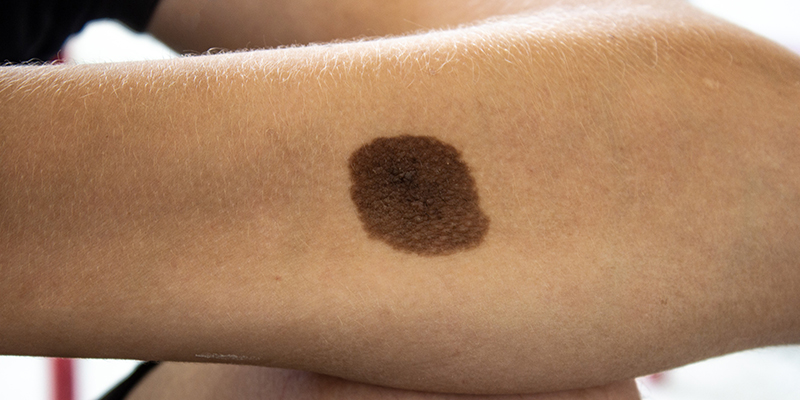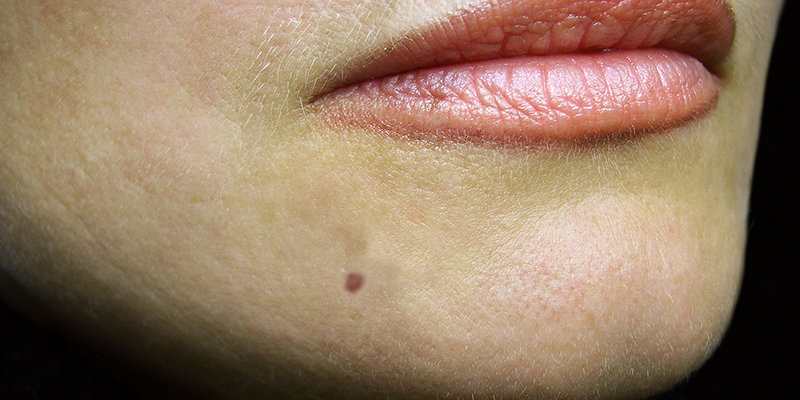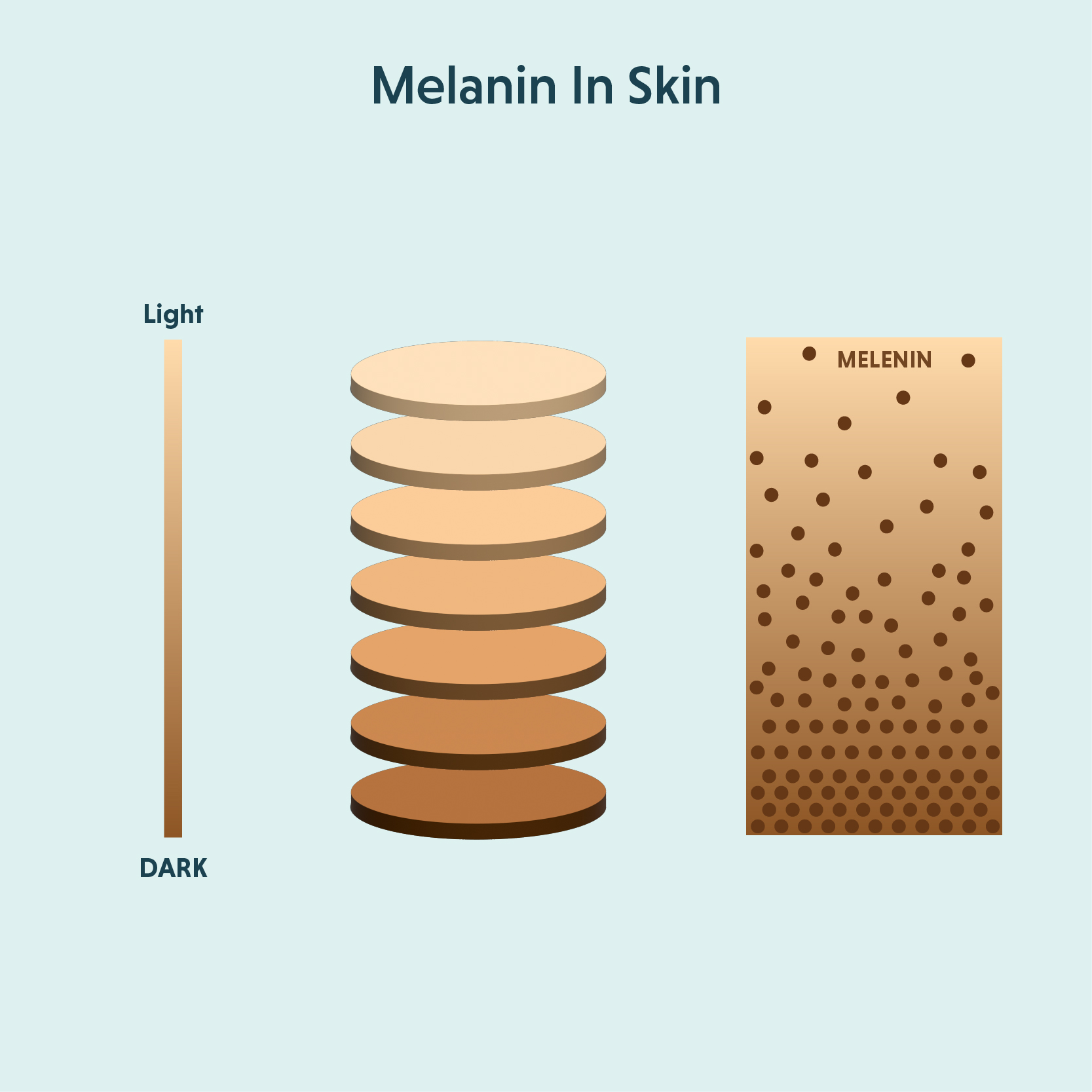In This Article
What Is Melanocytic Nevus And How To Treat?
When you look at your body, you would notice a lot of different kinds of marks, spots, blemishes, etc. Some of them may be cancerous while most of them are non-cancerous. Each of these have their own causes, symptoms, treatments, etc. Hence, it is very important to understand what these marks and spots are so that you know what you are dealing with. One such mark is melanocytic nevus. Let us understand what are these marks and how to treat them effectively?
In This Article

What is Melanocytic Nevus?
A melanocytic nevus is a disorder of the skin cells which produces pigmentation. These are generally non-cancerous in nature and are more commonly known as moles. These moles may either exist since your birth or you might develop them later in your life. In majority of the cases where an individual has a melanocytic nevus, there is no treatment required. However, there are few cases in which this melanocytic nevus marks need to be removed. A disorder of melanocytes is caused when cells that are responsible for producing melanin result in the development of melanocytic nevus.
Also Read: How To Increase Melanin In Skin?
Types Of Melanocytic Nevus
There are different types of melanocytic nevus which include
- Congenital Melanocytic Nevus: This type usually occurs in infants at the time of their birth and in majority of the cases they develop either around the head and neck. These types of moles can range from small size to giant melanocytic nevus
- Compound Melanocytic Nevus: This is a group of nevus cells which develop at the junction of the epidermal and dermal layers as well as within the dermis. They are usually raised with a flat patch around it
- Junctional Melanocytic Nevi: This type of melanocytic nevus usually develops at the junction of the skin’s layers the epidermis and the dermal layers. Hence, the name ‘junctional’. They are characterized by their flat surface, round structure and brown colour
- Dermal Melanocytic Nevi: This type of mole is usually slightly raised and is light brown in colour. Sometimes these moles may also have hair growing out of it
- Halo Nevi: This type of mole has a white ring around it which basically occurs because the skin has lost its colour in that particular area. Hence, the name ‘halo’. Once the mole fades out, the white ring also disappears as the skin gets back to its original colour
- Dysplastic Nevi: The dysplastic melanocytic nevus has an unusual appearance and it remains the same without any changes. This giant melanocytic nevus can either be flat or bumpy with irregular edge
Also Read: What Are Dead Skin Cells?
Signs & Symptoms Of Melanocytic Nevus
One of the most common symptom of a melanocytic nevus is that it is brown in colour. Apart from this, some of the other melanocytic nevus symptoms include
- They can be either round or oval in shape
- If not brown, they might either be flesh coloured or reddish brown
- They can either be very tiny in size almost like a pinhead or large in size wherein it might cover your entire arm
- It can either have a flat and smooth surface or a raised and wrinkled surface
- Some of the moles might appear to be flat and of one particular colour which gradually changes to a lighter colour and becomes raised later
- In most of the cases the moles might grow a stalk that slowly falls off or completely disappear
- These melanocytic nevi make an appearance during your initial years and can develop up to an age of 20 years
- Those moles which appear after your mid-20s should be checked out by your doctor
- Sometimes such moles can be painful, bleed, ooze out, are crusty or scaly in texture.
Also Read: Treatments For Wrinkled Skin
Causes of Melanocytic Nevus
Though there is no one definite cause of melanocytic nevus, there are couple of causes which can result in their development. These causes include
- Genetics: Some of the moles are hereditary such as atypical mole syndrome and dysplastic nevi. In these, a large number of moles develop out of which some of them may be larger or atypical when compared to the others. An individual’s genes is one of the major cause
- Sunlight: When your skin gets over-exposed to the harmful ultraviolet rays of the sun, it can lead to premature aging of the skin which in turn leads to melanoma. Thus, this exposure to sunlight can result in acquired melanocytic nevus
- Hormones: Often moles develop as a result of changes in the hormones. These hormonal changes are quite common during pregnancy or when someone is suffering from diabetes.
Also Read: How To Take Care Of Skin From Sun?
Diagnosis of melanocytic nevus
The most basic way of diagnosing a melanocytic nevus is by observing its appearance. Below are the factors which need to be checked in order to diagnose these moles
- Any changes in the colour, shape, size and structure of the mole
- If the mole develops when you are in your 40s
- If a particular mole appears to be different from all the other moles that you might have
- It has the characteristics of the ABCD guideline which is Asymmetry, Border irregularity, Colour variation and Diameter greater than 6 mm
- If the mole is bleeding and has an itchy and crusty surface.
It is best to consult a dermatologist if you notice the above mentioned characteristics so that they can perform an in depth check and find out if the mole is cancerous or non-cancerous and begin the treatments accordingly.
Melanocytic Nevus Treatment
In most of the cases, there is no need for removal. The main reason why people might opt for it are
- If it is cancerous
- For appearance sake where the moles are ugly-looking
- When the moles are bothersome when they come in contact with clothes, razor or comb
Most of these treatments can help in reducing the appearance of the moles as well as completely remove them. But before trying out any of the treatments suggested here, do ensure that you consult your dermatologist and take their opinion and suggestions. It would also help you to get a deeper understanding and knowledge about your condition.
-
Laser treatment:
Controlled beam of light are used to cause the removal of the mark but inducing newer collagen production. The pigmented tissues are destroyed by laser and new skin comes over the surface, thus fading the appearance of these nevi’s
-
Excision biopsy:
This treatment can be used when the mole is flat and suspicious-looking. In this method a punch device or a scalpel is used to cut-out the mole along with a part of the surrounding skin. Sutures are required in this treatment
-
Shave biopsy:
This treatment can be used if you have a protruding mole. In this method, the area around the mole is first numbed, and then a small blade is used to cut the mole. It is done for those moles which are smaller in size, there is no need for any stitches in this method
-
Dermabrasion:
This method is ideal if the treatment is being carried out within the first six weeks of the mole’s development. A device with a diamond tip or a wire brush is used to gently remove the layers of the skin which helps in reducing the appearance of the mole. This treatment can result in scarring
-
Skin curettage:
This treatment involves the scraping of the top layers of the skin. Just like dermabrasion, this method is also effective if it is performed within the first six weeks
-
Chemical peels:
Chemical peels containing trichloroacetic acid or phenol are effective in reducing the appearance of the moles. Apart from these, your dermatologist might also suggest a electrosurgical destruction to reduce the appearance of the moles.
Disclaimer:
This article provides medical information about various procedures for awareness purposes only. We want to help you know about the various treatment options beyond the services available at Oliva Skin & Hair Clinic. We request you weigh the pros and cons of these aesthetic practices and make an informed decision about your skin and hair health.
Frequently Asked Questions On Melanocytic Nevus
Though in majority of the cases a melanocytic nevus is benign, there are certain cases in which they may be malignant. Check with your dermatologist for more insights.
Melanocytic nevus is essentially a tumour but in certain cases it can also be cancer. Proper diagnosis by an expert dermatologist will help you understand the same. Though moles are often thought to be a common appearance on our skin, it is still imperative that you pay a close attention to them and take note of any changes in their size, appearance, structure or colour. This will aid you in ensuring that you get it treated effectively and at the right time.








